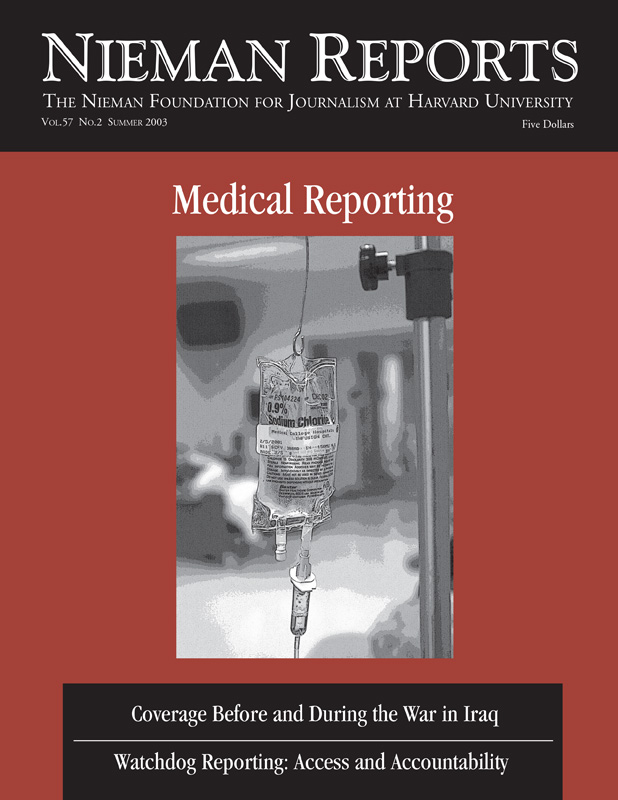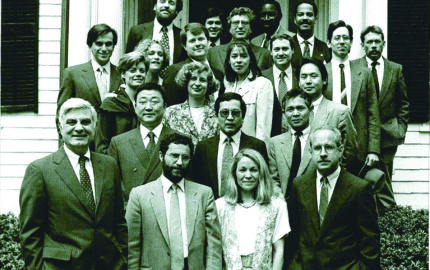A strength of our craft is its transparency and its capacity for searching examination when core values and standards of journalistic performance are violated. This spring, several of our nation’s leading newspapers demonstrated an admirable willingness to investigate their failures and inform the public through detailed accounts. The New York Times published an extensive account of how reporter Jayson Blair repeatedly wrote stories based on what the paper called “fabrication and plagiarism.” And The Miami Herald acknowledged that it published a story that unfairly accused the winning Kentucky Derby jockey of cheating.
The power of e-mail and the Internet means that internal newsroom efforts to address problems of journalistic ethics and performance get widely circulated on Web sites and quickly become public forums for discussion and debate, as well as a place for venting anger. Airing of opinions, criticisms and thoughts about why such situations happened and how to correct problems are healthy for journalism. We learn from one another’s mistakes. And through this process of self-examination, we send an important message to the public that in our most embarrassing moments we’re willing to be candid and to work at making necessary corrections to prevent reoccurrences and rebuild trust.
In this tradition, our craft is unusual. Compare these responses to the Enron Corporation, where executives tried hard to prevent public disclosure of practices, which eventually led to the company’s collapse by misleading the public, the securities markets, investors and, for a long time, journalists. Those in top positions at news organizations are more likely to initiate self-criticism and be forthcoming about their errors.
When a newspaper’s standards are violated, it is the editor who must stand before the bar of public opinion. In some cases, it’s been the editor who writes explanatory columns for the readers, who gives interviews, talks with readers, or holds a press conference. The editor must also be the person who responds to questions from angry staff members and readers, both of whom feel betrayed. It is often editors who answer readers’ queries about the paper’s ethics and performance. Rarely does a corporate spokesperson speak for the editor, nor is there a covey of flaks hovering nearby to coach an editor on how to spin the story to minimize the damage.
The evidence of wrongdoing can be raw, as the Times’s four-page coverage on May 12th demonstrated. The questions from staff can be raw, as well, as the editor, Howell Raines, discovered in his two-hour meeting with the Times’s staff three days later.
As editors and journalists in other newsrooms digested the details and began to think about the wide range of opinion and commentary, many newsrooms looked inward, asking “Could this happen here?” In a memo to her staff, Editor Sandy Rowe of The Oregonian noted that this “… profoundly sad and damaging chapter in journalism … affects all of us who love the profession and work each day guided by the highest standards, striving to serve our communities and bring credit to our beloved newspaper.” Then she asked her staff, as each read The New York Times account, to “consider what lessons you see, what questions you have, how you think they apply to our lives at The Oregonian, and what cautionary notes we should take from this.”
The evidence in the Jayson Blair case so far points to two critical lessons for newspapers: First is the need to better align daily journalistic practices with the highest standards of our craft. The second lesson is to stop trying to put the blame for such episodes at the feet of affirmative action and to embrace the undeniable imperative that by having a diversity of perspectives represented in our newsrooms, our coverage of all aspects of community life will be enhanced.
There are lessons also to be learned from the experiences of journalists in their coverage of the Iraq war and of the role the press played—and ought to have played—in helping readers, viewers and listeners sort out governmental policies involved in waging it. In this issue, we publish a section of stories in which journalists offer differing perspectives on reporting that happened during the build-up to war and once the war began. Their stories speak to the value of the Nieman Foundation’s international connections during a time of global crisis.
It is hard to dismiss the cynicism directed at the ubiquitous U.S. television images of American flags and on-screen banners such as “Operation Iraqi Freedom.” It is equally difficult not to take seriously the conclusion reached by many international journalists that the American press tended toward conformity in their reporting, as many among them left unchallenged the Bush administration’s story line about its military and foreign policy initiatives.
Our colleagues’ views merit strong consideration as we ponder whether we acted, in this circumstance, as the free and independent press that we often proclaim ourselves to be.



